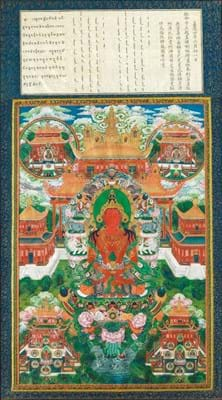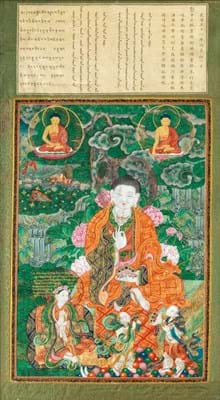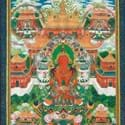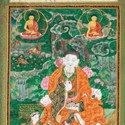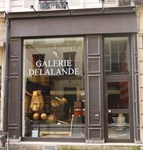The three-day prestige sale held by Dupont & Associés, Hôtel des Ventes de Morlaix (25% buyer’s premium) from March 8-10 in Brittany started with an ensemble of Asian art.
It was part of a collection assembled by a Colonel L who was director of radio services for AOF (French West Africa) in 1920 and stationed in China from 1936-46.
The ensemble encompassed a wide variety of Asian artefacts from snuff bottles, jades and other hardstones to paintings, bronzes, carved ivory costumes and ceramics.
Bidding came from Asia, the US and Europe and keen interest meant that every one of the 284 lots in this part of the sale found a buyer.
Sino-Tibetan thangkas
The stand-out lots proved to be two Sino-Tibetan Buddhist thangkas painted on silk and measuring 4ft 2in x 2ft 5in (1.28m x 74cm including frames).
The first to be offered depicted the deity Amitayus seated in dhyanasana on a lotus in front of a mandorla decorated with various animals, in the courtyard of a richly decorated golden temple.
The second depicted a Buddha surrounded by peonies in front of a mountainous landscape, with two disciples bringing offerings at his feet.
Both thangkas featured inscriptions to the upper part in Mandarin, Manchurian, Mongolian and Tibetan bearing the date 1799, 4th year of Jiaqing, on the Amitayus thangka and 1793, 58th year of the Emperor Qianlong, on the Buddha thangka. The catalogue, however, described the dates as apocryphal and dated both thangkas to the early 20th century. Each was estimated at €6000-8000.
On sale day tnumerous phone lines competed for these two pieces and the bidding sailed to €310,000 (£269,565) for the Amitayus thangka and €215,000 (£186,955) for the Buddha thangka, with the hammer falling to different Chinese buyers.
Given the size of the final prices, perhaps some bidders felt these to be period Jiajing and Qianlong works. However, Philippe Delalande, the Asian expert for the auction, said post sale that in his opinion, and having studied the two thangkas very carefully, he is still convinced they are not period although the quality is very good.
Nothing else in the sale approached these in price although another painting on silk, this time a long scroll that was dated to the 19th century, outpaced a modest €300-400 guide to take €30,000 (£26,085). This measured just over 6ft 7in (2m) in length and 3ft 1in (96cm) wide, was painted in ink and colours with the three Gods of Happiness above other figures and had an inscription and stamps to the top right.
In the section given over to bronzes, a 9½in (24cm) high Chinese gilt bronze of a Daoist dignitary depicted seated with hands crossed over the chest holding a hu, court, tablet and wearing a robe decorated with incised motifs and a hat, also outstripped its €300-400 guide to take €25,500 (£22,175).
Plenty of demand emerged for some of the smaller items such as pendants, hair pins and beads in jade and other hardstones; a case in point being a 1¾in (4.5cm) yellow tourmaline pendant carved with two felines dated to the late Qing era which sold for €5900 (£5130) against an €800-1200 guide.
Claudel sculpture
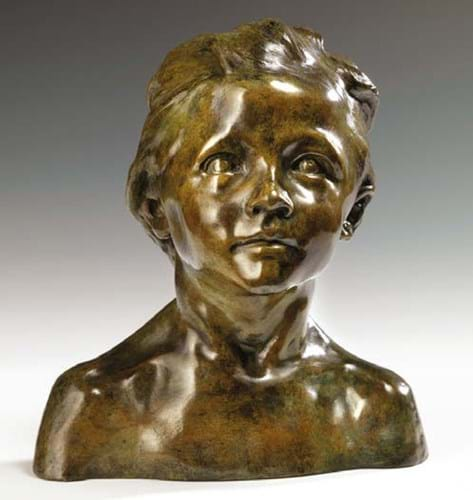
A bronze bust of a young girl by Camille Claudel – €72,000 (£62,610) at Dupont & Associés, Hôtel des Ventes de Morlaix.
Elsewhere in the auction, the second day’s sale included a bronze bust of a girl, La Petite Châtelaine, by Camille Claudel (1864-1943), which came from a private Paris collection by descent and realised a double estimate €72,000 (£62,610).
The 12½in (32cm) high bronze, was a posthumous cast from the Valsuani foundry, signed C Claudel and numbered II/IV on the left shoulder and had the Cire Perdue Valsuani stamp on the right.
£1 = €1.15


